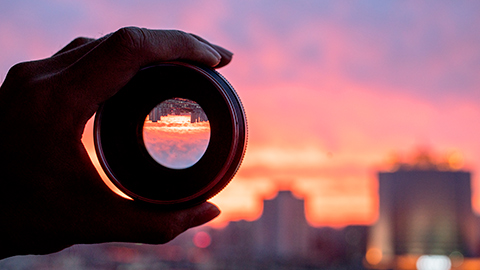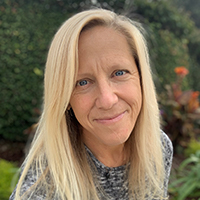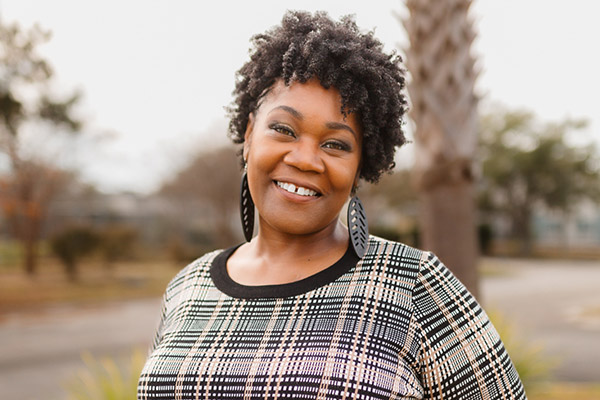07/27/2023

What if aliens really did pay us a visit? And what if the reality of their existence were to change everything we know about anatomy? In this episode of The Rebel MT, Allison explores the quadriceps muscle and flips things upside down to get a new perspective. It also might change how you work on the quads.

Rebel Massage Therapist: http://www.rebelmassage.com
AnatomySCAPES: www.anatomyscapes.com
Rebel Massage Therapist:
My name is Allison. And I am not your typical massage therapist. After 20 years of experience and thousands of clients, I have learned that massage therapy is SO MUCH more than a relaxing experience at a spa. I see soft tissue as more than merely a physical element but a deeply complex, neurologically driven part of who you are. I use this knowledge to work WITH you—not ON you—to create change that works. This is the basis of my approach. As a massage therapist, I have worked in almost every capacity, including massage clinics, physical therapy clinics, chiropractor offices, spas, private practice, and teaching. I have learned incredible techniques and strategies from each of my experiences. In my 20 years as a massage therapist, I have never stopped growing. I currently have a private practice based out of Long Beach, California, where I also teach continuing education classes and occasionally work on my kids. If they’re good.
website: www.rebelmassage.com
IG: instagram.com/rebelmassagetherapist
YouTube: youtube.com/c/RebelMassage
email: rebelmassagetherapist@gmail.com
AnatomySCAPES—created by and for hands-on professionals.
As hands-on health professionals, we want more than labeled charts of muscles, nerves, and bones. We crave anatomy education that informs our touch. AnatomySCAPES’ innovative online trainings are bringing vibrant, visual, real anatomy understanding to therapists with the Anatomy LOVERS eBox! Each month, you receive an image-packed, research-loaded mini-course including:
A downloadable and sharable Anatomy ART Card.
Research-loaded, 1-hour Course Webinar in the Anatomy LOUNGE with Nicole Trombley and Rachelle Clauson.
Anatomy ZINE course manual full of images, science and art to help you dig deeper.
Anatomy BRIEF Video that takes you into the dissection lab to see how anatomy LOOKS, FEELS, MOVES, and RELATES to its surroundings.
Really visual, really relevant, REAL anatomy education for hands-on professionals.
Go to anatomyscapes.com/ABMP and become an Anatomy LOVERS eBox subscriber today!
website: www.anatomyscapes.com/ABMP
FB: facebook.com/AnatomySCAPES
IG: instagram.com/anatomyscapes
YouTube: youtube.com/@anatomyscapes
Email: info@anatomyscapes.com
0:00:00.0 S?: As hands-on health professionals, we crave anatomy education that informs our touch. AnatomySCAPES innovative online trainings teach you what real anatomy looks like, feels like and how it relates to its surroundings. Each course includes a vibrant research-based anatomy story, an anatomy video brief from the dissection lab, and an engaging webinar with AnatomySCAPES co-founders, Rachelle Clauson and Nicole Trombley. It's relevant real anatomy education for hands-on health professionals and ABMP members save 20%. Go to anatomyscapes.com/abmp and start your journey today.
[music]
0:00:41.1 S?: This episode is brought to you by Rebel Massage deep tissue body butter. Crafted because oil is too slick and lotion absorbs too fast, these organic professional grade body work butters give you the grip you've been looking for. The best techniques in the world can get lost without the right product to support them. Try the get a grip version for a more specific focused work or the total meltdown version for that grip with a little extra glide. Made by a massage therapist for massage therapists. Head over to rebelmassage.com to get your grip today.
[music]
0:01:29.9 Speaker 1: What if aliens really did come to earth? Like what if they really landed somewhere and paid us a visit? What would it for real be like? I don't know about you guys, but I tend to think it would be so much more than we can even imagine. I mean, I wanna believe that it wouldn't be necessarily violent like District 9 or funny like Galaxy Quest or funny violent like Mars Attacks. I kind of think it would feel a lot more like Arrival, where the curiosity of both sides or whatever an alien species experiences as curiosity, creates a need to communicate and find out some of the bigger answers to the questions of the universe. I mean, the reality of interacting with a life form that lives somewhere else in this vast existence would turn so much of what we think we know upside down, not just about physics and chemistry and sciencey things, but deep philosophical issues and probably existential quandaries as well. Like the very basis of how we think would be upheaved. Life as we know it, would never be the same. As much as this is a really fun thought experiment, it hasn't actually happened yet. Well, I don't really know that for a fact, there are so many stories of sightings, but for the sake of this discussion, none of them are as documented and as widely accepted as say the fact that the light bulb was invented and now we have lamps.
0:02:57.1 S1: There are incredible imaginations or who knows, maybe real experiences among us humans as to what aliens are like, and I'm gonna draw on some of that today to flip what we think we know about our anatomy, more specifically, the quadriceps, upside down.
[music]
0:03:20.2 S1: The quads are muscles we know well. They live at the front and top of the human leg. They kick the knee straight into extension, and there are four of them. They are the thigh. But how well do we really know them? Most people think about the quads as being right on the front of the upper leg. I even just described them as that. In actuality though, they are vast. So vast in fact, that they have staked a claim on the entire femur, and might I add, they might even move bones around a little differently than you might have previously thought. At least if we look at them from a new perspective. But first, let's look at them from our current point of view. The word vastus has Latin roots meaning, drum roll please, vast or great. Which makes sense. These are some pretty great muscles. So much so that three of the four of them are named accordingly going from lateral to medial, those that are "vast" include the vastus lateralis, the vastus intermedius, and the vastus medialis.
0:04:22.9 S1: The fourth quad muscle, the rectus femoris, lays a top the vastus intermedius and is not well, as vast. It is long though, which is a version of vast, just I guess not enough to name it as such. The vastus crew are so vast that they wrap all the way around the upper leg and reach back to connect underneath the hamstrings at the linea aspera, the bony line going straight down the back of the femur. Their origins look something like this. For the vastus lateralis, the lateral lip of the linea aspera and moving out and up onto the gluteal tuberosity and then the greater trochanter. For the vastus intermedius, the anterior and lateral shaft of the femur, so most of the whole front of the bone. And for the vastus medialis, the medial lip of the linea aspera just across the border where we found the vastus lateralis.
0:05:17.4 S1: So if you can envision those, these muscles have latched on to almost the entirety of the femur. Let us not forget the creeping out of the connective tissue that binds these muscles to the bone and of course, to each other. Sometimes I like to think of connective tissue as a tacky liquid goo that seeps out and slithers its way around trying to grab and absorb things like The Blob or maybe like the slimy outer layer of the aliens from the movie Alien that seems to stick on to everything. More on this in a bit. Before we get too deep into aliens and before I get into where these muscles insert, we can't ignore the rectus femoris. Named for its upright fibers and the bone to which it is associated, its most distinguishing feature is that it sprouts up away from its vastus trio to cross over the hip and grab on to the front of the pelvis. Technically speaking, the origin of the rectus femoris is at the AIIS or the anterior inferior iliac spine. Not the easiest bony landmark to palpate, but locating the ASIS, the anterior superior iliac spine or the hardy lump at the front of the hip gives you a good orientation. Just drop inferior to that, you'll be pushing through the superior tendon of the sartorius, but that's okay, you get the idea.
0:06:34.8 S1: The rectus femoris joins the quads from there, laying directly on top of the vastus intermedius and the goo that binds them all together mushes at their ends and swallows up the patella before it grabs onto the tibia. Collectively, their official insertion is at the tibial tuberosity or the slight bump at the top of the shin bone, and collectively they work together to pull at the tibia to straighten the knee into extension.
0:06:58.7 S1: But I wanna shake things up a bit here. Time to look at things from a different perspective. In human anatomy, there are a handful of muscles that have the quality of being able to switch their origins and insertions, so that if the insertion is stabilized, the origin would move, changing the action of that muscle. Like if the scapula is fixed or un-moving, the serratus anterior then acts to elevate the thorax during forced inhalation instead of moving the scapula into protraction when the ribs are fixed. The muscle flip-flops what it does. Now the quads do not have this handy feature. But, what if instead of a group of muscles that converge to move the lower leg at the knee, what if the control was at the lower leg and the femur is getting thrown around like the top of a flip phone.
0:07:47.2 S1: Wouldn't that be crazy? It's almost like if an alien reached up from the ground and grabbed the femur. Think about it. Rising up from inferior to superior, if the aliens form is the lower leg, the tibia and fibula would make sense as a couple of solid arm bones, and instead of having eight carpal bones, there is just one, and we call it the patella, and instead of five fingers, there are four, but really there are three, and the middle finger has two parts, one on top of the other, and the part that's on top is just really long. And this alien hand is covered in sticky alien slime, so when the hand grabbed the femur, it suction cupped itself all over the femur. And so if we see it like this, when the alien hand flexes, we sit down. And when it extends, we stand right up. I mean, why not? We would be like those toys that have a silly human or animal standing on top of a little disk that when you press into the bottom, all of the strings relax and the silly human or animal collapses down. It's not that far-fetched.
0:08:53.4 S1: Many cultures believe that we draw our energy from the earth. So maybe, just maybe, aliens are here and they live in the earth, and they climb up from the ground, become one with our anatomy and dictate how we move. But we just can't see it yet. That would be hilarious and just a tad unsettling, so I'm gonna reel it back in. The quads are thick, powerful muscles that have a heavy hand in the health of not only our knees, but also our ankles and our hips. As part of the larger locomotive structure that moves us around the Earth, if any of these gets disjointed, it can throw everything else into a tilt. At the knee just above the patella, the aponeurotic tendon has muscles coming in from different angles, which means that when they contract, they pull at the tendon in multiple directions.
0:09:42.6 S1: This can be the reason for patellar tracking issues, but it is not commonly so, because it is very difficult to fire one of the quad muscles without firing the others. Where things get slippery is at the quad ligament, the ropy extension of the quad tendon that extends down from the patella onto the tibial tuberosity. If we place the lower leg into a slight internal or external rotation, this changes how the patella interacts with the patella femoral surface of the femur or the groove on the femur where the patella can slide up and down as we bend and straighten our knees. So how we place our feet when we do squats or lunges or when we walk or run, or pretty much when we do anything, it can affect how the quads fire. And if there is a slight misfiring in the vastus part of the quads, all of that alien goo or connective tissue is going to tense up and dictate how the rectus femoris fires too.
0:10:39.9 S1: And as an important side note, when we look at muscles that cross two joints, in this case, the hip and the knee, those muscles more heavily fire at the joint they are moving, so more specifically, if the rectus femoris is chiming in to flex the hip, those more superior fibers are doing the work. And if the knee is extending, the inferior fibers are lighting up. So what all of this means is if the connective tissue goo that is clamping down on the lower fibers to help stabilize the patella because the lower leg is rotated slightly out of alignment, chances are that the upper fibers of the rectus femoris are straining to pull free, which as you can imagine, could create a downward spiral at the hip, tilting and tugging into asymmetry, which could spin down the other leg or wind up into the spine and so on and so on.
0:11:32.1 S1: All of this to say, do not freak out. A slight deviation away from normal is actually normal. The only reason to look this closely at all of the moving parts is if your client is experiencing pain or dysfunction. At that point, understanding the mechanics helps you to decide your approach. Looking at the quads grip on the femur, recognizing the reach of the rectus femoris at the hip, familiarizing yourself with the strength of the connective tissue goo that binds these muscles to the femur and to the patella, and considering how all of these parts land at the tibial tuberosity, all of this will bring the kind of detail into your work that your client needs. But, if you choose to, you can revisit the idea that aliens really do have a grip on our legs and are walking us around the earth. And you can work on alien hands instead of quadricep muscles, and you can ease the tension of alien goo instead of connective tissue. And you can think about how to handle a grip that's coming from the ground up instead of from origin to insertion. And maybe, instead of working so hard, maybe you can just ask the alien to be a little nicer.
0:12:45.8 S1: And here we are, the end of the episode. Thank you to the extraordinary crew over at ABMP for helping me get my words into your ears. And if you wanna get any of your words into my ears or more accurately into my brain via my eyeballs from a computer screen, drop me a line at rebelmt@abmp.com. That's R-E-B-E-L-M-T@abmp.com. I always wanna hear your questions, comments, suggestions or salutations. Also, if you're interested in checking out anything else I'm doing, head over to rebelmassage.com where you will find all sorts of fun things to click on, like homemade organic products for your practice, cool links to continuing education classes, thoughts I have typed up and posted here and there, and other Rebel Massage dabblings.
[music]
0:13:37.2 S?: Members are loving ABMP five-Minute Muscles and ABMP Pocket Pathology, two quick reference web apps included with ABMP membership. ABMP Five-Minute Muscles delivers muscle specific palpation and technique videos plus origins, insertions and actions for the 83 muscles most commonly addressed by body workers. ABMP Pocket Pathology, created in conjunction with Ruth Werner, puts key information for nearly 200 common pathologies at your fingertips and provides the knowledge you need to help you make informed treatment decisions. Start learning today. ABMP members log in at abmp.com and look for the links in the featured benefits section of your member home page. Not a member, learn about these exciting member benefits at abmp.com/more.
[music]





